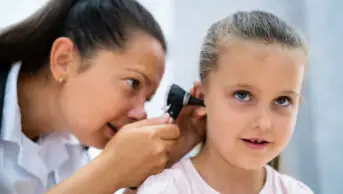
Shutterstock.com
If you work as a community pharmacist, chances are you went to university with an ambition to make a difference in patients’ lives. But some pharmacists might find they spend more time checking medicines than focusing on patient wellbeing.
In the UK, we have a tendency to classify patients’ conditions into ‘boxes’ and we do not always treat the patient with a holistic approach, as often seen in Eastern cultures.
But this looks set to change, as we begin to take social prescribing — an approach to care that supports a person’s wellbeing, as well as their health — more seriously. Patients referred for social prescribing can get access to a range of non-clinical activities, such as dancing, gardening, sports or arts.
In August 2020, the government awarded the National Academy for Social Prescribing (NASP) £5m for projects across the UK. The charity aims to support people “via social prescribing link workers, to make community connections and discover new opportunities, building on individual strengths and preferences, to improve health and wellbeing”.
We already have the Healthy Living Pharmacy ethos in place in the community, and social prescribing is a natural fit: community pharmacies are the perfect place to launch social prescribing pilots. With our existing footprint in our local community, we can identify patients who can benefit from social prescribing, such as those suffering from social isolation, financial debt, housing issues or malnutrition.
My own journey with social prescribing started in 2016 at the Royal Pharmaceutical Society’s annual conference, when I was first introduced to the ‘NHS Five year forward view’, which would “bridge the gap between health and wellbeing”.
Suddenly I saw the link between my love for dancing (wellbeing), and my profession as a community pharmacist (health) — I was already a practitioner for Dance for Parkinson’s (a movement programme that helps improve older people’s quality of life).
I was so captivated by this idea that, in 2018, I wrote a book on it: Pharmacy Movement: How to Prescribe Social and Digital Medicines, which created opportunities for me to give three keynote speeches on the topic, being a fluent French-speaker, in Paris.
But how would I get social prescribing going in the UK pharmacies? Around the same time NASP was launched in 2019, I launched the Social Prescribing Pharmacy Association (SPPA). At the moment, it is a one-man army, but I hope that more pharmacists will join me in making social prescribing a mainstream practice across the UK.
To get the SPPA to where it is today, I’ve attended several social prescribing events where I’ve been able to connect with highly influential people in the social prescribing world. One of those is Marie Anne Essam, who helped create NHS England’s social prescribing course for link workers. Hoping that she would share my beliefs, I approached her with my plans to expand social prescribing, and she kindly helped me create a dedicated course for UK community pharmacy teams.
The online social prescribing course for community pharmacy, available on Udemy, is a quick introduction to authentic social prescribing and helps pharmacy teams to get started, including how to approach your local surgery to start making social prescribing referrals to local link workers, and meeting your local primary care network (PCN) clinical pharmacist to generate ideas. Social prescribing isn’t community pharmacy’s responsibility alone — collaboration with your PCN, surgery and link workers is so important.
As community pharmacy moves from ‘dispensing space’ to ‘clinical hub’, we’re learning that medicines are not the only solution for patients’ challenges. While advanced technologies such as precision medicines, augmented and virtual realities, and 3D printing may be part of our future in community pharmacy, we will always need social connectedness to maintain our health and wellbeing.
Consider getting involved in social prescribing, and show your patients how much you really care about them.
Arun Nadarasa, founder, Social Prescribing Pharmacy Association. Find out more on Twitter: @UKSPPA


